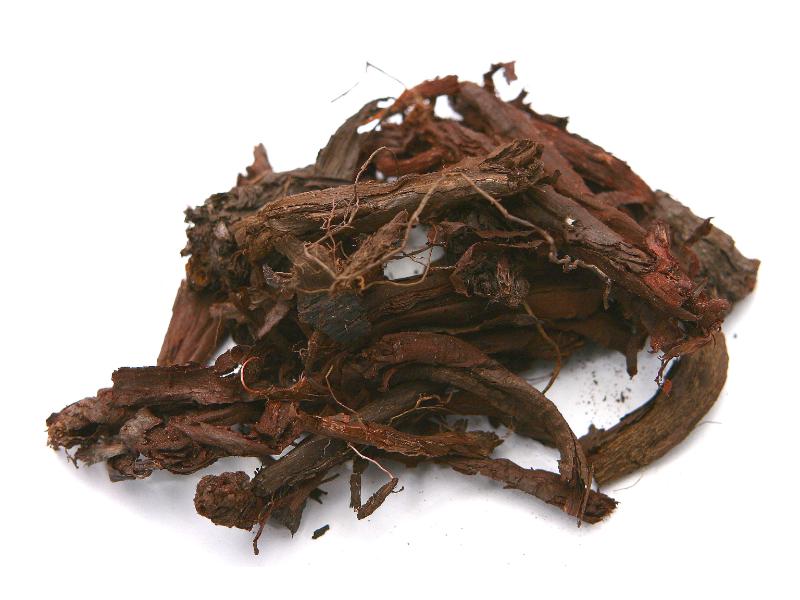Search in medicinals
Arnebiae/Lithospermi Radix
Arnebia/lithospermum
紫草 〔紫草〕 zǐ cǎo

Alternate English names: puccoon
Alternate Chinese names: 紫草根 zǐ cǎo gēn
Kingdom: Plant
Origin in PRC Pharmacopoeia: Arnebia euchroma (Royle) Johnst. [= Macrotomia euchroma (Royle) Pauls.]; Arnebia guttata Bge.; Lithospermum erythrorhizon Sieb. et Zucc. (PRC Pharmacopoeia)
Origin in unofficial sources: Lithospermum erythrorhizon Sieb. et Zucc.*; Macrotomia euchroma (Royle) Pauls. [= Arnebia euchroma (Royle) Johnst.; Lithospermum euchroma Royle]; Onosma paniculatum Bur. et Franch.; Lithospermum tschimganicum B. Fedtsch.; Arnebia thomsonii Clarke; Arnebia guttata Bunge*; Onosma hookeri Clarke var. longiflorum Duthie; Arnebia euchroma (Royle) Johnst.*
Use: Medicinal and alimentary
Category: Heat-clearing agents / Heat-clearing blood-cooling agents
Properties: Sweet, salty; cold.
Channel entry: Liver and heart channels.
Actions and indications: Cools the blood and quickens the blood, resolves toxin and outthrusts papules: Purple-black maculopapular eruption,
Dosage and method: Oral: 3–10g in decoctions. For external use, it is either steeped in oil or boiled down to make a paste.
Warnings: Zǐ cǎo is cold and lubricating in nature and has a mild draining effect. Thus, it is contraindicated in spleen vacuity with sloppy stool. A contraceptive effect is sometimes mentioned in the literature; this appears to be based upon a study conducted in 1964 that reported 82.4% efficacy when using zǐ cǎo orally as a female contraceptive.
Notes:
Product description: Arnebia euchroma (soft puccoon): This root is contorted, spindle-shaped, 8–15 cm long and 1.5–2 cm in diameter. It has a blackish maroon or purple coloring, a loose skin, and an interior is composed of 10 or more flaky layers. It is light, and easily breaks and has a slightly sour smell. The decocting pieces are 1.5 cm sections. Lithospermum erythrorhizon (hard puccoon): This is a contorted cylindrical or spindle-shaped root, 7–15 cm long and 0.7 cm thick, with remains of the stem at the base, often bearing side roots. The exterior surface is dark purple, rough, with longitudinal furrows. The skin is thin and slightly scaly. This root is relative hard but light and brittle. The cross section reveals the purple skin contrasting and partially separated from the pale brown woody core.
Quality: Clean, large, fat roots that are deep purple in color, and have no remains of the stem attached are the best.
Production area: Xīnjiāng, Tibet, Gānsū, and Japan.
Etymology: The name zǐ cǎo 紫草, literally purple herb,
reflects the color of this item.